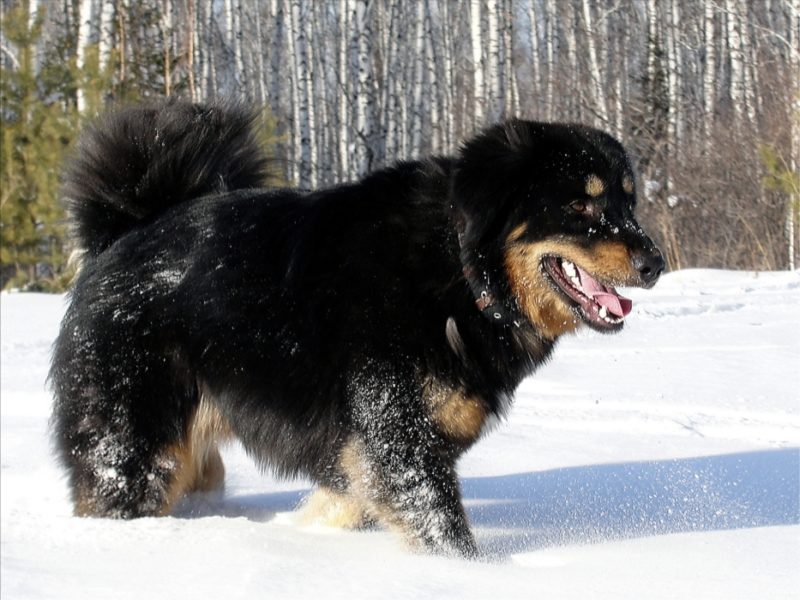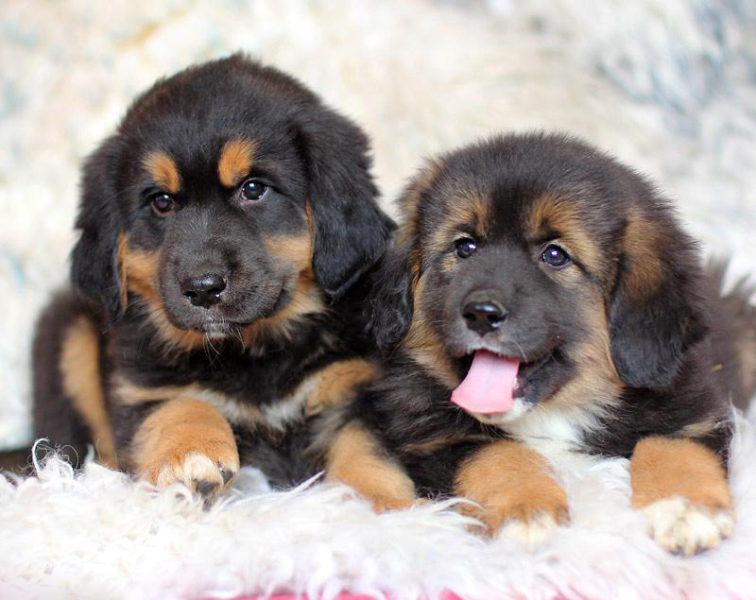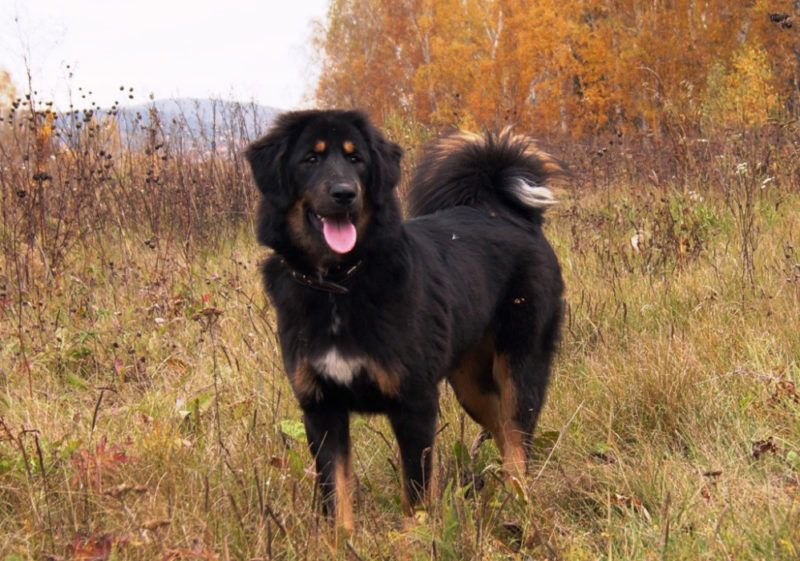According to ancient beliefs, the Mongolian people descended from wolves, but in this ancient state it is the wolfhounds that are worshiped - the Mongolian shepherd or banhar. At first glance, this seems counterintuitive, but geneticists have found that most dogs are descended from jackals, and the Banhars are descended from wolves. A unique animal has become part of the culture of people, therefore it requires a special attitude.
Material Content:
Description of the Mongolian shepherd breed
This is an indigenous shepherd dog breed, which is distinguished by good health and remarkable strength. Banhara have a different color and length of coat. Some shepherd dogs living in the steppes with shepherds, on the head, neck and back of the body, fallen mollusks form. Unattractive "jewelry" are of great practical importance - they protect the body of dogs in battle from wolf teeth.
Large dogs of Banhara look intimidating - they are animals of large stature with a massive skeleton and powerful muscles. Elastic dense skin sometimes forms folds on the neck and head. Dogs grow for a long time, reaching maturity only by 5–6 years.
Character, types and behavior
Mongolian wolfhounds are known for their ferocity and inactivity. But this is only a cursory glance. Dogs have a strong guard instinct that helps them do the work of the guards. All strangers are wary. The huge shaggy animals at the temples are more “sociable” than their steppe counterparts, they easily make contact with a person.
In ancient times, fiery-red banharas lived near the Noyons, the Mongol noble warriors. Golden-red color personified the position of the owners - it was a symbol of wealth, prosperity, power.More characteristic of the breed is a black and tan shade.
According to the type of wool, there are three types of banhara:
- Shorthair
- semi-long-haired;
- long-haired.
By nature, dogs are endowed with a strong and balanced temperament, hardy and obedient. They are wary of strangers, but never show excessive aggression or hysteria.
Breed standard and puppy selection
Banharas are very large dog breeds; males are always taller and more powerful than bitches. Majestically, aware of their power, hardy, capable of running fast.
Description of the breed:
- massive skull, relief cheekbones;
- the forehead is wide, convex or flat;
- clearly visible stop and superciliary arches;
- profile muzzle is rectangular, wide, does not taper towards a black nose;
- ears are triangular, hanging, have an average height of landing;
- amber or hazel eyes, oval, set wide;
- large white teeth have a scissor bite;
- limbs of medium length;
- paws are round, arched, reminiscent of a wolf;
- movements are leisurely and free;
- brown, red, black and gray coat colors are found, spotty, black-and-white and piebald colors are unacceptable.
You can buy a healthy puppy of Banhar in the kennel of the city of Ulan-Ude or from rural residents. Everyone knows how to choose an animal from breeders - you need to see if the pedigree and medical documents are in order, whether the pet is healthy.
But the Mongols have unique customs for choosing puppies. It is believed that if a baby raised by a scruff hangs limply, it will become a weak dog, and when it bends and strains its back, it means it will grow strong. There is a belief that puppies of the Mongolian shepherd with a white mark on the chin in the womb sucked milk, because they will bring good luck to their owner.
Interestingly, dogs cannot be sold according to Mongolian customs. Before buying, future owners come to the local shaman to indicate the direction where to move. Before giving it to the new owners, the puppy is sprinkled with milk and passed through a stirrup.
Maintenance, care and feeding
The Mongols adore their younger friends. They do not keep dogs in kennels, but allow them to live the same way their ancestors lived for thousands of years - in the open air, right in the steppe.
Mongolian banhar is in good health, it does not require special care. When kept in the house, you need to often walk the dog, it is useful to him constant physical activity. The wool sheds, so it is combed out several times a week. The hygienic procedures of exhibition animals include bathing, caring for claws, ears, eyes and teeth.
It is desirable to feed the dog with dry formulations intended for large breeds. It contains all the components necessary for growth. With a natural diet, pets are given meat, cereals, vegetables, koumiss. In food, they are picky, and have a good appetite.
Dog's purpose
Dogs have very strong paws, they easily win the fight of the wolf. Mongolia has the highest concentration of dangerous animals in the world. Since the villagers raise cattle, they cannot exist without a wolfhound dog. Therefore, the Banharas from ancient times guarded the herds. Huge dogs lived not only on pastures, but also in monasteries, protecting local inhabitants from evil spirits, thieves and predators. Such dogs were considered sacred by Buddhists, the monks took good care of them.
Currently, Mongolian shepherds are used as companions and bodyguards. They serve as security guards and rescuers during emergencies, participate in search operations.
Cynology is at a high level in Mongolia. Banhars represent the breed at exhibitions and receive well-deserved prizes. The winners are awarded hand-made cups with a dog figure, as well as medals of an unusual rectangular shape. These insignia of the winners resemble the seals of Genghis Khan, which in ancient times provided great power to the owner.
Education and training of banhara
Mongolian shepherds are very trained. In addition to the main training course, they master commands and techniques that help in security and search work. Thanks to a balanced temperament, animals do not show excessive aggression in the battle with the enemy, they are obedient and very smart.
Banhara training is a special activity that brings a lot of pleasure. No wonder the dog is considered sacred in his homeland. Difficulties can arise only for lazy owners who do not consider it necessary to walk with the pet for a long time and engage in its upbringing.
















